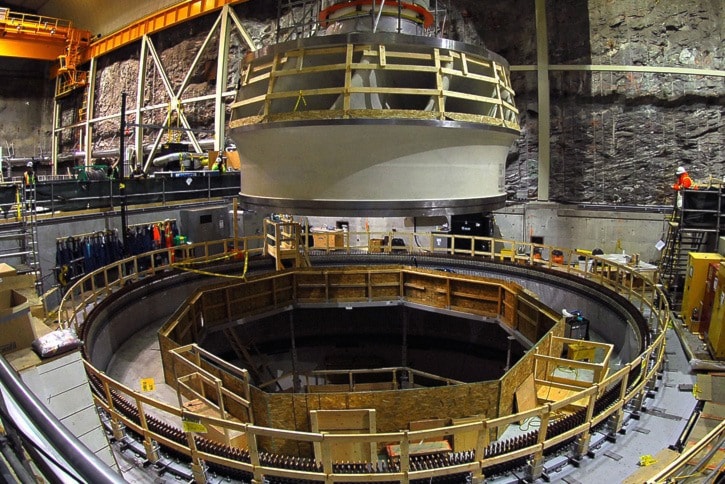BC Hydro has completed one of its mega-projects, expansion of the Mica Dam on the Columbia River to full capacity, as the utility weathers a slump in mining and continued delays in liquefied natural gas projects.
The addition of two water turbines to Mica cost $714 million, plus a new high-voltage transmission line to carry power to the Lower Mainland and Vancouver Island. BC Hydro has also moved up plans to add a sixth turbine at the Revelstoke Dam, as work continues on the Site C project on the Peace River.
[A look inside the Mica Dam project ]
With major upgrades at the Ruskin Dam in the Fraser Valley and the John Hart Dam on Vancouver Island also underway, BC Hydro has applied for a four per cent rate increase to take effect on April 1, 2017. That follows increases of nine and six per cent in the past two years, mainly to finance major projects and pay down debt.
The four per cent rate is a one-year interim application to the B.C. Utilities Commission, which would add about $4 a month to the average residential electricity bill. Faced with mine shutdowns and uncertainty in large LNG projects, BC Hydro put off its three-year rate proposal when it filed the application in February.
Under a 10-year rate plan imposed by the B.C. government, rates are to increase 3.5 per cent in 2018 and three per cent in 2019. After that, authority over rate setting is to return to the BCUC.
Despite the current downturn for industrial customers, BC Hydro projects demand to increase 40 per cent over the next 20 years, due to population and industrial growth.
It has also scheduled major maintenance at Mica, with two original turbines built in the 1970s due to come out of service for 18 months each.
The B.C. government has proposed to Ottawa that a second power grid link to Alberta be built to help that province retire its coal-fired power plants.



